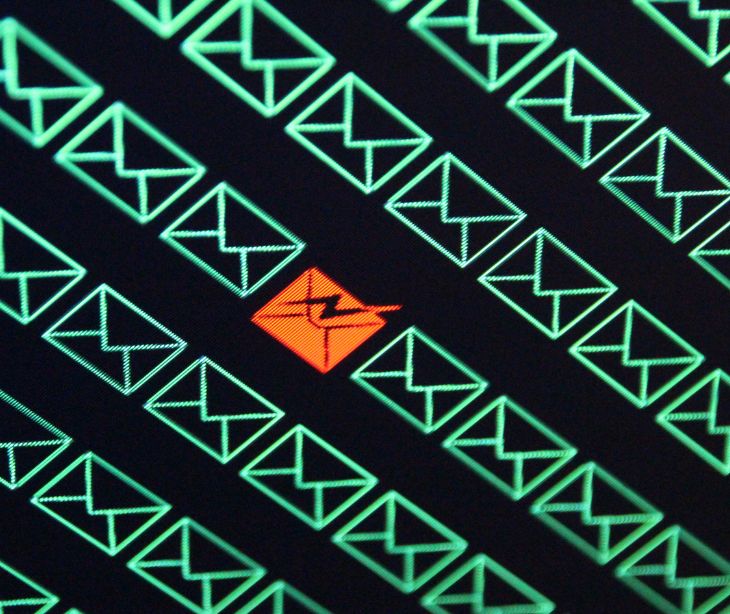
According to Healthcare Data Breaches: Insights and Implications, “E-health data is highly susceptible, as it is targeted most frequently by attackers. A long-term analysis of data breaches showed that healthcare records were exposed by internal and external attacks, such as hacking, theft/loss, unauthentic internal disclosure, and the improper disposal of unnecessary but sensitive data.”
The threats to healthcare cybersecurity
Healthcare providers are vulnerable to a wide range of cyber threats that can compromise patient data and disrupt operations. These threats include:
Data breaches
One of the biggest challenges in healthcare cybersecurity is the risk of medical records breaches. Breaches can occur due to inadvertent internal data leaks or malicious external attacks.
Phishing
Phishing attacks use deceptive tactics to trick employees into revealing sensitive information or downloading malicious files. These attacks can lead to data breaches and compromise the security of patient information.
Malware
Malware can be installed on systems through phishing emails, malicious websites, or infected USB drives. Once inside the network, malware can steal sensitive data, disrupt operations, and even hold data hostage through ransomware attacks.
Ransomware
Ransomware attacks involve encrypting an organization's data and demanding a ransom for its release. Healthcare institutions often feel compelled to pay the ransom to regain access to patient data and avoid disruptions to patient care.
Distributed denial of service (DDoS)
DDoS attacks try to overwhelm a healthcare organization's network, rendering it inaccessible and disrupting operations. These attacks can lead to significant downtime, impacting patient care and causing financial losses for the institution.
Read more: Types of cyber threats
The challenges of healthcare cybersecurity
Digital patient records
The transition from paper-based to electronic medical records has increased the accessibility of patient data. Healthcare institutions now face the challenge of securing large amounts of sensitive information stored, shared, and analyzed electronically.
Downtime is not an option
For healthcare institutions, any downtime caused by cyberattacks can have life-and-death consequences. Ransomware attacks, in particular, can cripple an organization's ability to provide patient care.
Patient priority
Healthcare workers are primarily focused on patient care, not IT security. They often lack the expertise required to navigate the complexities of cybersecurity. Healthcare organizations need security partners that can alleviate the burden of email, data, and ransomware protection, allowing healthcare professionals to focus on their core responsibilities.
Related: Cyberattacks on the healthcare sector
The importance of cybersecurity in healthcare
Protecting patient data
Patient data is a valuable commodity on the black market. Cybercriminals can exploit this data for financial gain or engage in identity theft. Healthcare institutions must prioritize cybersecurity to prevent unauthorized access, data breaches, and the potential harm to patients resulting from compromised personal information.
Ensuring continuous operations
Cyberattacks can bring operations to a halt, jeopardizing lives and compromising the institution's reputation. A security strategy, including awareness training, perimeter defenses, and business continuity plans, is necessary to maintain continuous operations.
Compliance with regulations
Healthcare organizations must comply with regulations such as HIPAA and the HITECH Act. These regulations require strict control over patient information and impose significant penalties for violations. Cybersecurity measures can help healthcare institutions meet these regulatory requirements and avoid legal consequences.
How Paubox can strengthen an organization’s cybersecurity
Paubox’s suite of inbound security solutions is designed to bolster an organization’s cybersecurity and mitigate data breaches. ExecProtect prevents display name spoofing by quarantining suspicious emails before they reach users, while GeoFencing filters emails based on their geographical origin to block threats from high-risk regions. DomainAge evaluates the credibility of email sources by checking the age of their domains, and the AI-powered Blacklist Bot keeps evolving to block malicious senders.
The Paubox Email Suite also ensures that all emails are HIPAA compliant by default, using TLS 1.2 and TLS 1.3 encryption for secure communication. The premium plan adds email data loss prevention (DLP) to stop the accidental sharing of sensitive information outside the organization. With HITRUST CSF certification, Paubox is committed to maintaining top-notch cybersecurity, especially for healthcare providers, to protect against data breaches.
FAQs
What is cybersecurity and how does it relate to healthcare security?
Cybersecurity involves protecting computer systems, networks, and data from digital attacks, unauthorized access, and damage. In healthcare, it is necessary to safeguard protected health information (PHI) and electronic protected health information (ePHI). Effective measures help keep sensitive patient data confidential, secure, and compliant with HIPAA regulations.
Why is cybersecurity important for HIPAA compliance in healthcare settings?
Cybersecurity is beneficial for HIPAA compliance because it helps protect PHI from breaches and unauthorized access, which are central to maintaining patient privacy and confidentiality. By implementing strong cybersecurity practices, healthcare organizations can prevent data breaches, avoid significant fines, and ensure that they meet HIPAA’s security and privacy requirements.
What are the potential risks associated with inadequate cybersecurity under HIPAA?
- Data breaches: Unauthorized access to ePHI, leading to exposure of sensitive patient information and violation of HIPAA regulations.
- Non-compliance penalties: Significant fines and legal consequences for failing to implement sufficient security measures as required by HIPAA.
- Financial losses: Costs related to breach remediation, legal fees, and potential settlements with affected individuals.
- Reputational damage: Loss of trust from patients, partners, and the public due to the organization’s failure to protect sensitive health information.
- Operational disruptions: Interruptions to healthcare services and administrative functions caused by cyberattacks or compromised data security.
Subscribe to Paubox Weekly
Every Friday we'll bring you the most important news from Paubox. Our aim is to make you smarter, faster.




